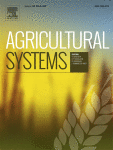View Item
- xmlui.general.dspace_homeCentros Regionales y EEAsCentro Regional Buenos Aires SurEEA BalcarceArtículos científicosxmlui.ArtifactBrowser.ItemViewer.trail
- DSpace Home
- Centros Regionales y EEAs
- Centro Regional Buenos Aires Sur
- EEA Balcarce
- Artículos científicos
- View Item
Industrial agriculture and agroecological transition systems: A comparative analysis of productivity results, organic matter and glyphosate in soil
Abstract
The system of industrial agriculture (IA), often implemented on a large scale and with high dependence on the supplies use, is reducing the soil organic matter (SOM) and increasing the glyphosate presence in the environment. An alternative approach to IA is agroecologywhich takes greater advantage of natural processes and beneficial on-farm interactions in order to reduce off-farm input use and to improve the efficiency of farming systems. In this study,
[ver mas...]
The system of industrial agriculture (IA), often implemented on a large scale and with high dependence on the supplies use, is reducing the soil organic matter (SOM) and increasing the glyphosate presence in the environment. An alternative approach to IA is agroecologywhich takes greater advantage of natural processes and beneficial on-farm interactions in order to reduce off-farm input use and to improve the efficiency of farming systems. In this study, a transition agroecological system (AT) is the alternative of the IA. Our objectives were: (i) to compare the agronomic productivity between AT and IA systems, (ii) to determine the effect of management practices on soil quality indicators such as soil organic matter content (SOM), soil bulk density, change in the weighted mean diameter (CMWD) and glyphosate and aminomethyl phosphonic acid (AMPA) concentration and (iii) to compare the economic results through a multi-temporal economic analysis between AT and IA systems. The soil sampling was carried out per soil-specific zones, delimited from apparent soil electrical conductivity (ECa) and elevation. Samples were taken at 0 to 2, 2 to 5, 5 to 10, 10 to 20, 20 to 30 and 30 to 40 cm of depth to determine the SOM content, the glyphosate concentration and main glyphosate metabolite, AMPA. Besides, the bulk density (δa) and CWMD were determined. The δa was lower in AT with respect to IA, both under no tillage (NT). No significant differences were found for CWMD between AT and IA systems, although a tendency to a lower value in AT system was observed. If we consider the percentage of organic matter as carbon matter per hectare, this means that in 6.5 years increase 540 kg ha−1 at 0 to 40 cm depth. The SOM content increased from 4,9 to 5,6% in AT with respect to IA. The content of glyphosate + AMPA at the first 40 cm was 0.06 kg ha−1 in the AT and 0.84 kg ha−1 in the IA system. In the AT system, the gross margin accumulated during 6.5 years, increased 244% with respect to IA. These results suggest that the AT system proposed could be applicable in extensive productions with temperate climates without interfering with the livelihood of the agricultural producers and it allows an improvement in soil conditions. It is important to carry out further studies in order to confirm the benefits of the AT system in other edaphic-climatic conditions, integrating productive, economic and environmental aspects.
[Cerrar]

Fuente
Agricultural Systems 167 :103-112 (2018)
Date
2018-09-22
Editorial
ScienceDirect
ISSN
0308-521X
Formato
pdf
Tipo de documento
artículo
Palabras Claves
Derechos de acceso
Restringido
 Excepto donde se diga explicitamente, este item se publica bajo la siguiente descripción: Creative Commons Attribution-NonCommercial-ShareAlike 2.5 Unported (CC BY-NC-SA 2.5)
Excepto donde se diga explicitamente, este item se publica bajo la siguiente descripción: Creative Commons Attribution-NonCommercial-ShareAlike 2.5 Unported (CC BY-NC-SA 2.5)

